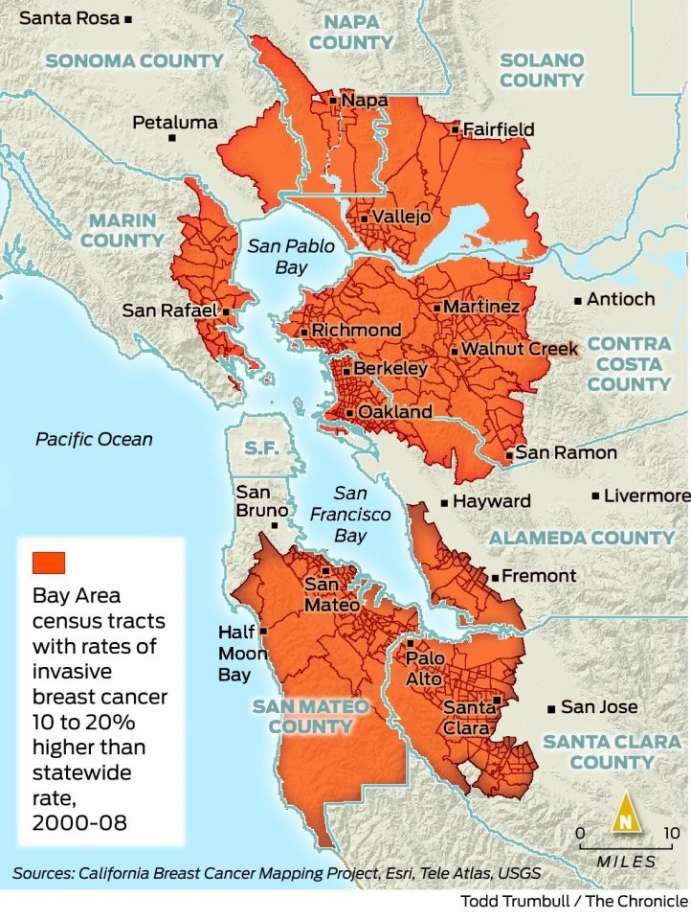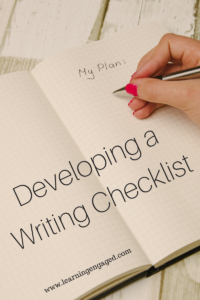Developing Writing Habits
Click below for the TALE handout.
Media Presentation
Active Learning Benefits Everyone
Research shows that using active learning strategies in the classroom is effective for all learners. While the term active learning is not new, perceptions of what active learning look like are shifting. Active learning no longer has to appear as organized chaos in the classroom. Instead, active learning is engaging students in a manner that may or may not be hands-on, but always engages a student’s mind.
When implementing active learning into your classroom, make sure you are intentional. First ask yourself, 1) What are my learning objectives?, 2) What activities/assessments will help my students be successful on the identified learning objectives?, 3) Are there any active learning strategies that will extend the activities/assessments?. Being intentional in what active learning strategies you implement makes a huge difference and increases the likelihood students will be successful.
There are many effective active learning strategies, but the infographic I created below highlights a few that I always found effective in my classroom (both K-12 and higher ed). If you try any, let me know how it goes.


What do you notice? What do you wonder?
Prime your students for learning, activate prior knowledge, and develop critical thinking through the use of visuals that make students think…What do I notice? What do I wonder?
One way to use this activity is to have a visual displayed when the students walk into class asking them what they notice and wonder. Choose visuals that pertain to what you will be covering in class.
For example:

Image Source:http://www.sfgate.com/health/article/Bay-Area-breast-cancer-clusters-seen-4068698.php


Image Source: http://nobpinhb.blogspot.com/2012/03/hermosa-beach-slant-oil-drilling-maps.html
35 Tips for a Stay at Texas Children’s Hospital

We recently found ourselves in the Emergency Room of Texas Children’s Hospital with our three-year-old daughter. What was supposed to be a one night stay turned in to a 6 day, 5-night scary ordeal that we learned a great deal from. While parts of our experience were out of our control and handled very poorly, there are things that I know now that would have made our trip easier had we known then. If we ever have to do it again, we will be much more prepared.
While we hope to never have another visit to Texas Children’s Hospital, I wanted to pass on what we learned hoping it will help others have a better visit than we did.
Before I start, I want to say that the doctors and nurses at Texas Children’s Hospital looked over my daughter and took care of her in a way that no one could at that point. We walked out almost as good as new with next steps and a possible plan. This is more than we could have asked for and many people are not so lucky. While overall, the experience was awful, that was because of a few people. The majority of the people at Texas Children’s Hospital were amazing and I thank God for them and how they cared for my daughter.
This information is in no particular order and only applies to the Texas Children’s Hospital we were at in Downtown Houston. Other branches of the hospital may be different.
35 Tips for a Stay at Texas Children’s Hospital
- Be your child’s advocate. I know this sounds like an easy and obvious one but when there are many things going on around you and you are scared, you are not always your strongest self. I was my daughter’s advocate much later than I should have been, but I got there and things got SIGNIFICANTLY better. It shouldn’t have to be that way, but it was for us.
- Trust your doctors but trust your instincts. You will see many people on the first day/days and not every one of them is talking to the others. At one point my daughter had gone 35 hours without food or drink (just an IV that had the wrong fluids for about 25 of those hours) and she was hysterical. I finally told the nurse that either they gave me permission to give her some water or I was going to do it anyway. They gave me permission. It wasn’t the nurse’s fault it had been that long, she had only known us for an hour and was trying to get us in for a procedure. It was a series of crazy events where we kept being pushed back for the procedure due to other emergencies coming in. It was not life or death, my daughter got her procedure, and finally got some ice chips to suck on.
- If your child has rolling veins like my child or another situation where it is difficult for them to give blood, ask for the VAT team. The VAT team is a nurse that has a portable ultrasound machine to find the veins. My daughter was giving blood multiple times a day and they never got it on the first try. Unfortunately, they always had to try once and fail before they could call in the VAT team, but at least they only failed once each time. Yes, it was a nightmare. I have been told that you can be put on the list for VAT to always be the first attempt, but we were never put on that list. This is something I will definitely talk to patient services about if we ever have to return.
- There is a playground/garden across the street from the hospital. Anytime my daughter was not tethered to her IV, we would take a visit to the garden. It was great for her to be outside, they have no problem with you leaving the hospital, and it made the stay more bearable any chance we could get out of the hospital room.
- The 16th floor of the hospital has a library, laundry services, kidzone (for ages 6+) and other amenities. The library was our favorite since my daughter was too young for the kidzone and there were puzzles and games to check out as well as books. Again, it is great to leave your room and the library is wonderful.
- Bring your own food. They charge you for everything. I was used to hospitals charging for meals, but hospitals I am more familiar with let you get things like jello and apple juice on your own. Texas Children’s charges you for every juice box and if you are in a situation like us where we were there for gastroenterology problems but on a neurology floor when patients are more severe than you, you may have to wait a while to get anything. I’m grateful we had a room, but it was tough not being on the same floor as others with our same concerns. They had no problem with us feeding my daughter appropriate food we had bought at the Target down the road.
- There are playrooms located on every floor. They are not open at all times but go when they are open. The volunteers are wonderful and there are so many toys to play with. They also come by with toy carts and give away toys all of the time. I definitely believe the volunteers at the hospital are one of the true blessings.
- For various reasons that I will not go in to, we were told multiple times that we should contact a patient advocate. Looking back on it now, we should have. Trust your instincts and contact a hospital patient advocate if you feel your child is not getting the treatment they need. You can find their information on the hospital’s website.
- Free internet…there is free wifi and if you didn’t bring your laptop, you can access the internet through the television in your room.
- Write down questions you think of, ask them, and do your own research. Do not worry about feeling stupid or trusting what others say. I thought I would remember things and I never did. Plus, I would always think of new questions as my husband and I were reflecting after the doctor left. At one point, my daughter’s blood sugar got so low that she essentially passed out. It wasn’t until a new nurse came in, saw her, and panicked that I realized how low it really was. They had been telling me numbers, but since no one was worried, we weren’t either. I had no idea what blood sugar levels should be at. I do now.
- Remember that you are paying for everything, so you have a right to know. No one would tell us the results of the numerous labs and tests my daughter received unless we asked. I started writing things down to look up and compare.
- If you want to talk to a doctor, request it. Doctors are busy and do not have time to check in all of the time. Since we were not on the same floor as other gastroenterology patients, I think we were seen even less. They probably charged us each time we requested to see a doctor, but there were times things were really bad (30+ hours without food or drink, messing up orders and having to get blood drawn more than necessary, etc.) and I demanded to see a doctor to figure out what was going on. The doctors were always kind and listened to me.
- They have parent/patient information folders they give out to everyone. We did not get ours until we had been there for three days and it would have been very helpful. Request visitor information if you do not receive it.
- Plan for a week even if you don’t think you will be there that long. There are laundry services, but what do you wear when you are washing your only bra? My sweet husband went to Target with a list a mile long and he was having to buy me clothes and things that he had never had to find before. Plus, the shopping trip was very expensive. It would have been a 3.5 hour round trip to go home and get our things, though, so we decided it was worth it.
- If you have a choice, get there early in the week. Nothing happens on the weekend unless it is an emergency. We were sent down on a Wednesday, due to craziness, messed up orders, and other things I will not go in to, procedures my daughter was supposed to have on Thursday got pushed to Friday morning, which was too late to put us on the schedule for Monday so we were put on a wait list for Monday morning and just hung out at the hospital all weekend. I believe, though I could be wrong, that if we had gotten there on Tuesday, we would have gone home on Friday and had a four-day visit instead of six.
- Take care of you. I was so worried about my daughter that I wasn’t eating (I didn’t want to eat in front of her when she couldn’t eat) and I was getting basically no sleep. I ended up with low blood sugar and just not being at my best for her. Plus, low blood sugar can lead to fainting during the many labs being drawn.
- As a children’s only hospital, they will not take care of adults…at all. If you have an incident as an adult like fainting during labs or anything, they will send you across the street to St. Luke’s. My husband and I were both there so I am sure they would not have sent both of us, but they definitely talked about sending one of us due to fainting. (I won’t say which one.)
- The blood pressure machine scares the everything out of my daughter. They can take blood pressure on the leg instead of the arm and, according to my daughter, it is much better. It at least gave us something she wasn’t scared of.
- Bring 3M hooks to hang on the windows. It is so bright in the hospital and tough enough to sleep without the room being lit up. My mom brought us 3M hooks and we hung an extra blanket over the window. This made sleeping much easier. We left them up for the next visitor.
I hope they saw them.
- Texas Children’s Hospital has their own mychart for patient information. Set this up BEFORE you leave. It is a hassle after you leave the hospital and requires much more documentation.
- Park in Garage 12. It is located below the hospital and you can take the elevator straight up to your room without having to walk a block or so and/or deal with rain.
- If you park in Garage 12, they have carts to help you bring stuff in and out. We had so much stuff by the time we left that my husband had already made two trips before a nice nurse took pity on him and got him a cart. Ask for a cart.
- When we were sent to Texas Children’s Hospital, our doctor had already been in contact with a specialist there. We thought that meant we would be seen quickly. It didn’t! You still have to go to the Emergency Room and wait hours to be seen by the ER doctor before being admitted. Try to get there early in the day if you can. There is a shorter wait.
- Bring your test results with you. Even if you are told they were sent, bring them with you. We had to redo some tests that had already been done because of confusion. This is time-consuming and costly.
- Check out is really fast….really, really fast. This is great until you realize no one did all of the things they told you they were going to like set up mychart and get medication figured out before you left. Do not leave without mychart and having a prescription in hand. We do not live in Houston and the meds were sent to the pharmacy near the hospital. It took weeks for me to get it all figured out.
- There is a fun model train display and a McDonald’s in the Abercrombie building across the street. I am not a fan of McDonald’s, but getting out to see the train was fun.
- If you walk a few blocks around the hospital, there are many things to see. Bring a stroller, if your child is small, and walk around if they feel up to it. Security is surprisingly lacks at the hospital and we were able to leave anytime we wanted.
- In the epilepsy wing (which happened to be the floor we were on), there is a hall that is painted entirely like a jungle. It is beautiful and a great escape from your room.
- Bring reusable cups you can refill as needed. It is important to keep yourself fed and hydrated so you can stay healthy for your little one.
- If you child uses pullups, you may want to bring some. They only have diapers.
- When we packed for our “one” night stay, we only packed one pair of pajamas and two changes of clothes for my daughter. I assumed she would be in a hospital gown most of the time. This was not the case. She only wore a gown when she went in for a procedure. Otherwise, she was in normal clothes.
- The 3rd floor has multiple food options. There is a cafeteria on one end and a mall type food court at the other. The food is decent and easy to find.
- The hospital is VERY cold. I know most hospitals are, but just be prepared. I wore long sleeves and pants the entire time and we often slept in hoodies. They will give you extra blankets but it never seemed like enough.
- Packing List: There are many things to bring with you, but these are just a few to grab if you have time.
- chargers for all electronics
- glasses (if you wear them) even if you wear contacts
- toiletries (they only have baby supplies)
- socks/slippers
- jacket/hoodie
- lovies/blankets
- separate bag for the ER so you do not have to take everything in with you but you may be in the ER for a couple of hours
- pajamas
- food/snacks
- 3M hooks (see note above)
- bath toys
- dirty clothes bag
- clothes
- While our experience was made horrible by a few people, there were many amazing people that blessed our lives daily and did everything they could for our daughter. During our time there, I realized some of the needs of Texas Children’s and will help as I can for all of the children who have to spend nights in the hospital. Mainly, consider donating gently used toys. The playroom on our floor was a bright spot in my daughter’s day and those toys made all the difference. It helped her feel normal. Also, if you sew, you can make pillows for the children. My daughter was given a pillow while we were there and she loved it.
I again want to reiterate that our horrible experience was because of a few people. I appreciate doctors and nurses so much and could not do what they do. I also hope our experience was not the norm but just a series of truly unfortunate events that led up to some scary circumstances. While I have learned from it and will be more educated if we ever have another hospital stay, I will continue to trust and respect anyone in healthcare because they deserve my respect.
Find a Book Friday
(This page contains affiliate links.)

The most difficult part of getting reluctant children to read is getting a book in their hands. Often times, children that feel they do not like to read will not even pick up a book. In my experience, if a child thinks they do not like to read, it is because they have not found books they are interested in…yet.
To assist in the challenge of getting children to love reading, I started “Find a book Friday” on my Facebook page. On many Friday’s, I pick a book to showcase that, in my experience, is loved by students. My hope is that students will be able to see these brief book introductions and be drawn to reading the book themselves.
Additionally, children of all ages benefit from someone reading to them. “Find a book Friday” episodes serve as another resource for children to hear books read aloud.
Since it is sometimes difficult to find things on Facebook, I am linking each “Find a book Friday” episode here so they can easily be referenced. If you have book suggestions for future episodes, please add them in the comments below.
 Giraffes Can’t Dance by Giles Andreae – Picture book
Giraffes Can’t Dance by Giles Andreae – Picture book
 The Search for Wandla by Tony Diterlizzi – Chapter book
The Search for Wandla by Tony Diterlizzi – Chapter book
 The Secret Subway by Shana Corey – Picture book
The Secret Subway by Shana Corey – Picture book
 The Book No One Ever Read by Cornelia Funke – Picture book
The Book No One Ever Read by Cornelia Funke – Picture book
 The Westing Game by Ellen Raskin – Chapter book
The Westing Game by Ellen Raskin – Chapter book
 Finding Winnie by Lindsey Mattick – Picture book
Finding Winnie by Lindsey Mattick – Picture book
 Voices in the Park by Anthony Browne – Picture book
Voices in the Park by Anthony Browne – Picture book
 The Lion, The Witch, and The Wardrobe by C. S. Lewis – Picture book version
The Lion, The Witch, and The Wardrobe by C. S. Lewis – Picture book version
 The Lightning Thief by Rick Riordan – Chapter book
The Lightning Thief by Rick Riordan – Chapter book
Developing a Writing Checklist
(This post may contain affiliate links.)

I am a planner. I make checklists for most everything in my life. From, grocery trips, to my daily schedule, to goals for the coming year, I love to have a plan I can check off as I progress. This checklist system helps me feel and be successful in activities I want to accomplish and it also helps me assess where my time is spent and if I am productive with my time.
For me, writing requires a checklist like any other activity I undertake. If I plan out my writing, thinking about all of the components I need to address to be successful, the tasks become smaller and much more attainable. Additionally, as I check off each task, I feel accomplished and less overwhelmed about the entire process.
Writing can be a very overwhelming task, especially when approached from a macro perspective. If you look at the large writing task looming, even getting started can be an accomplishment in itself. Conversely, if you approach writing from a micro level, breaking the large writing task into small chunks, the writing seems much more achievable and even a task I might enjoy.
Writing checklists also serve as a valuable resource to ensure consistency and quality in your writing. One example of a writing resource checklist is included below (Academic Writing Checklist).
Based on the work by Dr. Pat Goodson, the next video in my video series, “The Write Thing to Do: Enhancing Academic Writing Proficiency” takes you step by step through the process of developing a writing plan and the benefits to such an activity. If you have a writing task at hand, definitely check out this video for insight into how to break your writing down into micro-level chunks that will increase your writing productivity and possibly even your enjoyment.
Other videos in this series include:
Writing Without Grammar Worries

When I talk to people about their writing, one of the first things I hear goes something like, “I’m not a good writer because I cannot remember all of those grammar and punctuation rules.” While I do not disagree that grammar and punctuation rules get monotonous and difficult at times (I am not a grammar expert, by any means), those rules may not be as difficult to approach as you might think.
While grammar and punctuation are one piece of writing proficiency and are important, arguably they are not the most important piece in enhancing your writing.
Before you worry about the grammar rules you may or may not remember from high school English class, make sure you have first developed:
- A strong writing habit
- A way to track your writing
If the above two elements are in place, it is time to tackle the grammar and punctuation. Many people struggle with using correct grammar and punctuation in their writing and feel this hinders their success and writing productivity. Luckily, many resources are available on the internet to help us all improve our grammar and punctuation skills without having to memorize rules.
I have chosen a few of my favorite resources, ones that have truly helped increase my writing proficiency and made my life easier as a writer, to share with you in the next two editions of my video writing series, “The Write Thing to do: Enhancing Academic Writing Proficiency”.
In video 4 and video 5, I walk you step-by-step through how to use various resources to assist you in the writing process. Most of the resources focus on grammar and punctuation, but there are a few other helpful resources in the video as well.
Watch these videos, try out a few of the resources on your own writing, and leave me a comment regarding what you thought.
Your Writing Tracker: Logging Your Writing the Way Fitbits Log Exercise
(This post contains affiliate links.)

Research shows that if you keep track of something, you are more likely to pay attention to it, care about it, and be successful at it. Consider the new popularity of Fitbits and exercise apps. We want to have a record of our daily exercise amounts to hold ourselves accountable and have something to brag about to others. I always hate it when I forget to wear my Fitbit when I exercise. It is almost like it didn’t happen if I do not have a record of it.
Why is it that we automatically think of keeping a record of something such as daily amount of exercise but we do not often keep records of other important areas of our life that would benefit us much in the same way as our Fitbit does for exercise.
For my academic path, this something is writing. The leading factor behind academic success is writing proficiency. If you cannot write (and publish) well, you will not be considered successful in academia. Knowing this, I have set out on a journey to take what I have learned about academic writing and share it with the world. Or at least the part of the world interested in academic writing.
Founded on the work by Dr. Pat Goodson at Texas A&M University and her POWER model, I have created a 15 week workshop (which I deliver each semester to graduate students) and a video series aimed at transforming the way we write.
The series I have developed is called “The WRITE Thing to Do: Enhancing Academic Writing Proficiency and focuses on developing writing different from the usual methods that are often tried and not always helpful. This model starts with seeing yourself as a writer and establishing strong writing habits (video #2 in the series). These habits include: writing daily, scheduling your writing, logging your writing, and writing accountability. The first two videos in the series focus on the foundation of the program and scheduling your writing.
The most current video focuses on logging your writing to increase productivity. Think of it as a writer tracker or a Fitbit for writing. If you have never logged your writing before, you will be amazed at the difference it makes. Watch this video and try it out. Let me know what you think.








